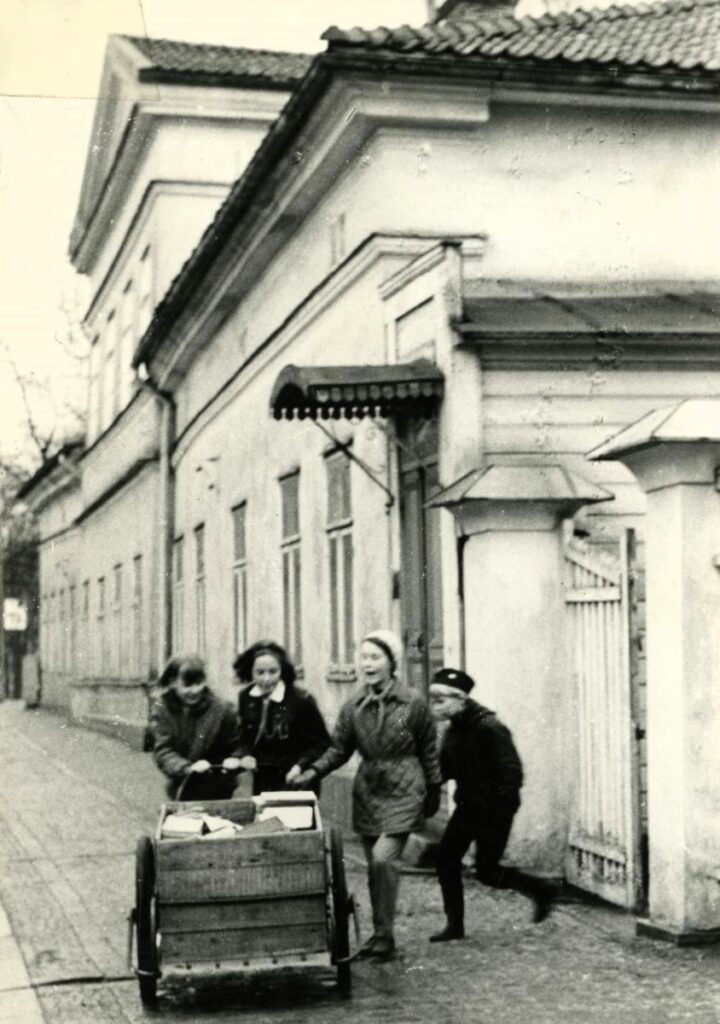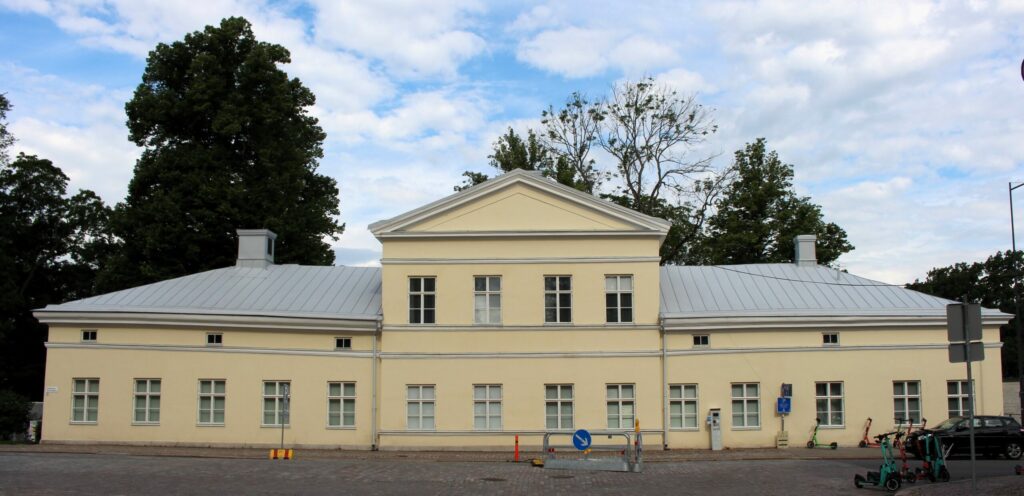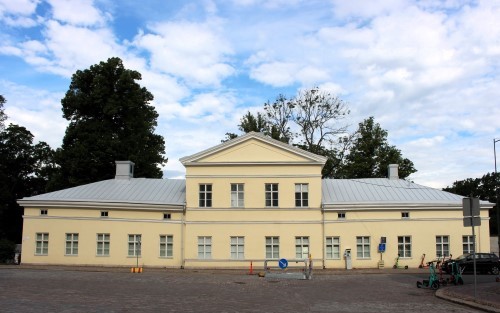Tryckerihuset
Biskopsgatan 19
Year of construction: 1829-1832
Tryckerihuset (printing house in English), built between 1829 and 1832 by printer Christian Ludvig Hjelt, is a simple unadorned building made of plastered brick. Its dominant architectural feature is the two-story high central section.
In October 1823, the Senate issued a privilege letter to Christian Ludvig Hjelt, granting him the right to publish the newspaper Åbo Underrättelser. The first issue was published on the 3rd of January, 1824. The newspaper was printed in Tryckerihuset between about 1835 and 1850.
Bequest to the Åbo Akademi University Foundation

Councillor Magnus Dahlström purchased the property in 1906, and together with his wife Ellen, they bequeathed Tryckerhuset to the Åbo Akademi University Foundation in 1923. In 1930, the music history collections, which later turned into the Sibelius Museum, and the biological collections moved into the building.
A major renovation and foundation reinforcement were carried out in 1965, and in 1967 the building was taken in use by the Donner Institute and the subject of Religious History. After the Library of Religious Studies moved out in 1991, the upper floor was converted into research rooms. The Donner Institute, along with the Steiner Library, moved in the autumn of 2005 to the newly restored Humanisticum (now Juridicum).
Current Use
Between 2005 and 2007, Tryckerihuset underwent a complete renovation, including additional foundation reinforcements and room layout changes. After the renovation, the building was used by the Institute for Human Rights until 2015, when they moved to the ASA-buildings. Today, Tryckerihuset houses Financial Services and student psychologists at the Åbo Akademi University.

Source: Väggarna talar (2017) by Lars Berggren and Annette Landen.


